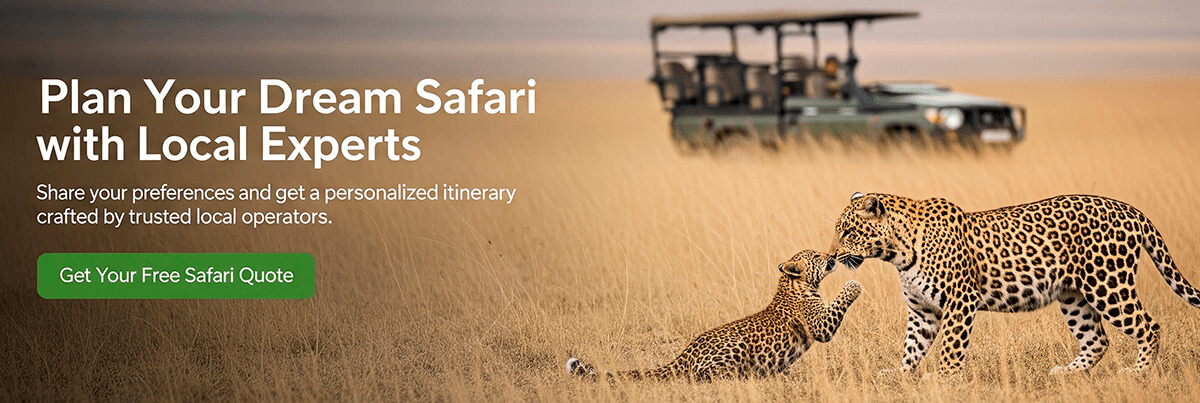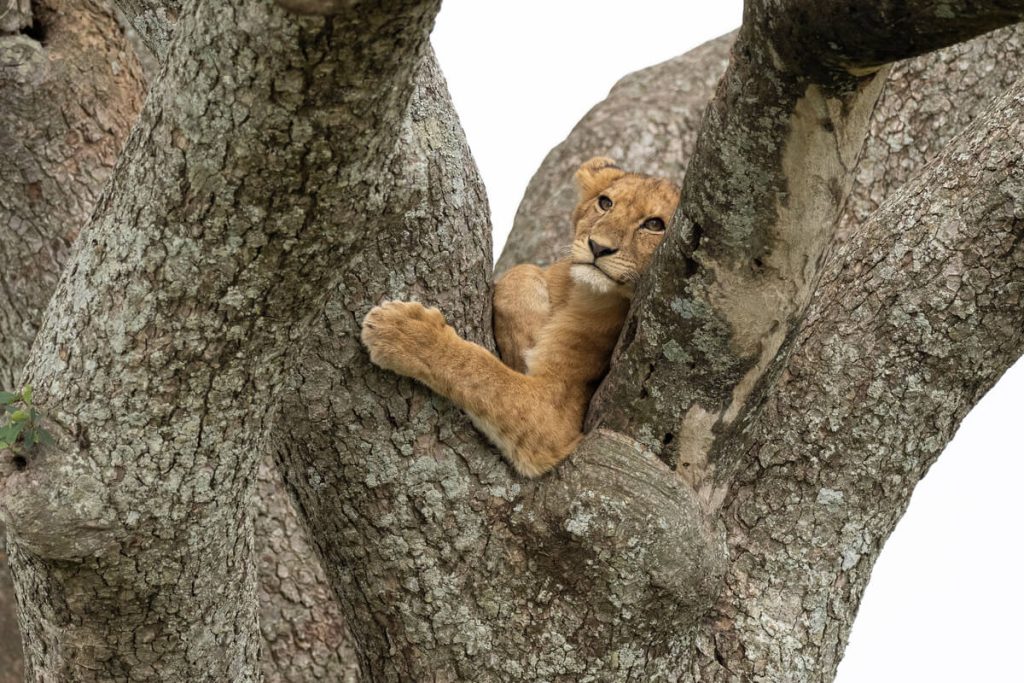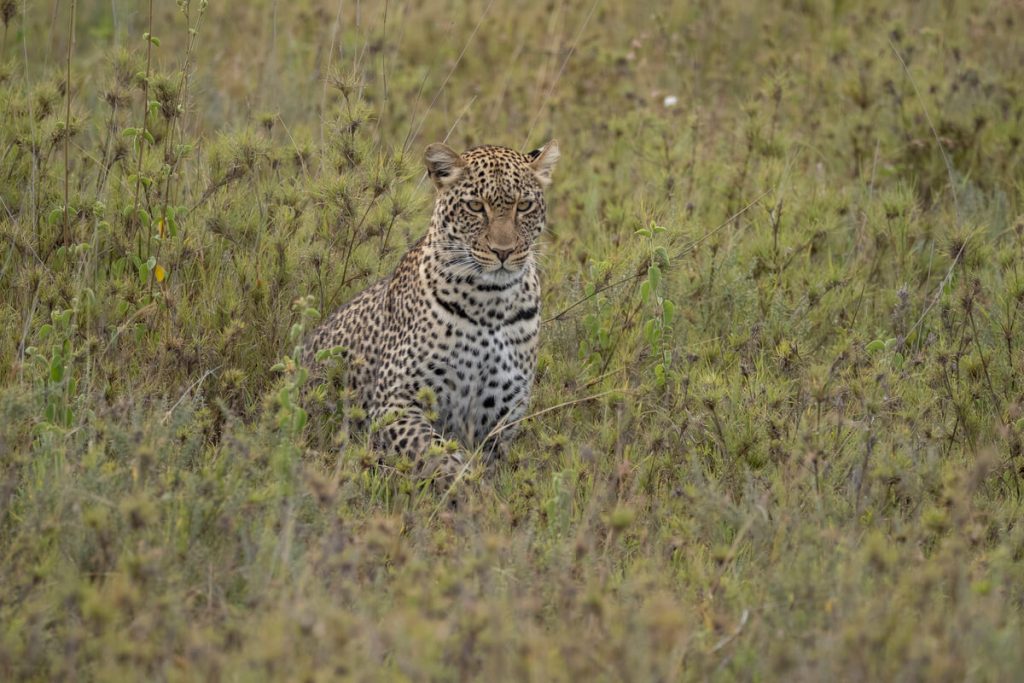Tarangire National Park, located in the northern part of Tanzania, is one of the most visited parks in the country. While it may not be as famous as Serengeti National Park or the Ngorongoro Conservation Area, it is highly recommended to include this park in any itinerary through Tanzania.
One of the highlights of Tarangire is its abundance of elephants. You can see herds of more than 300 individuals, especially around the Tarangire River. This river is the main water source for the park, attracting not only elephants but also zebras, giraffes, and buffaloes.
Another feature that makes Tarangire National Park famous is its ancient baobab trees. These enormous and majestic trees are scattered throughout the park.


Where is Tarangire National Park Located?
Tarangire National Park covers an area of 2,600 km² and is located in the northern part of Tanzania, specifically south of Lake Manyara.
It is quite common to include a safari in this national park when visiting the northern parks of the country. It takes about three hours by car from Arusha to reach the park.
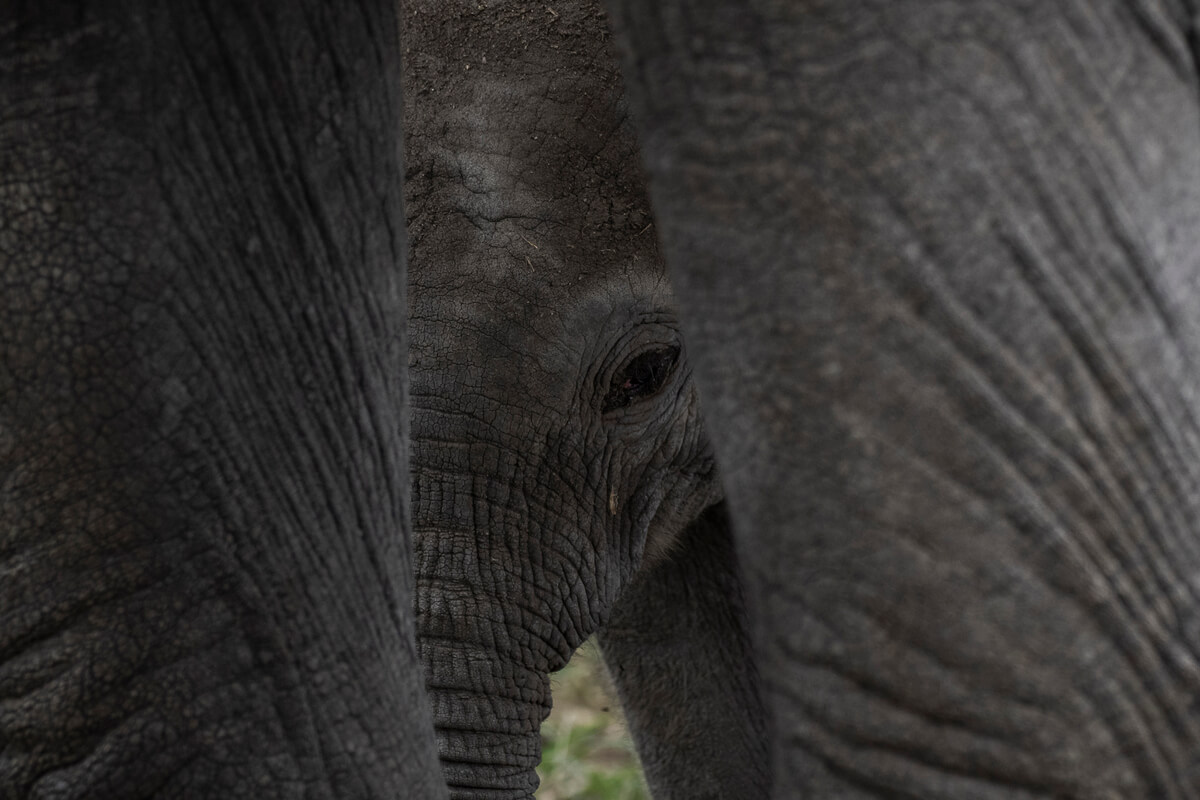
How to Visit Tarangire National Park
The most common way to visit Tarangire National Park is by taking a 4×4 safari. While it is possible to enter the park independently, it’s not recommended, especially if it’s your first visit to the area. Tarangire is vast, and if you want to enjoy wildlife observation, it is crucial to know the park’s layout and the best areas to see each species.
For this reason, it is common to go on safari with a local guide. Day safaris can be arranged from Arusha, but if you have more time, it is advisable to book a multi-day safari (ideally between four to ten days) and combine your visit to Tarangire with safaris in Serengeti and Ngorongoro. A great way to find affordable safaris is by booking directly with local operators in Tanzania. You can use the form I created to get in touch with trusted local operators.
Another option for visiting the park is to book accommodation near the park, such as the Tarangire Sope Lodge or Tarangire Safari Lodge, and organize safaris through them.
During a visit to the park, you can also take walking safaris and 4×4 night safaris.
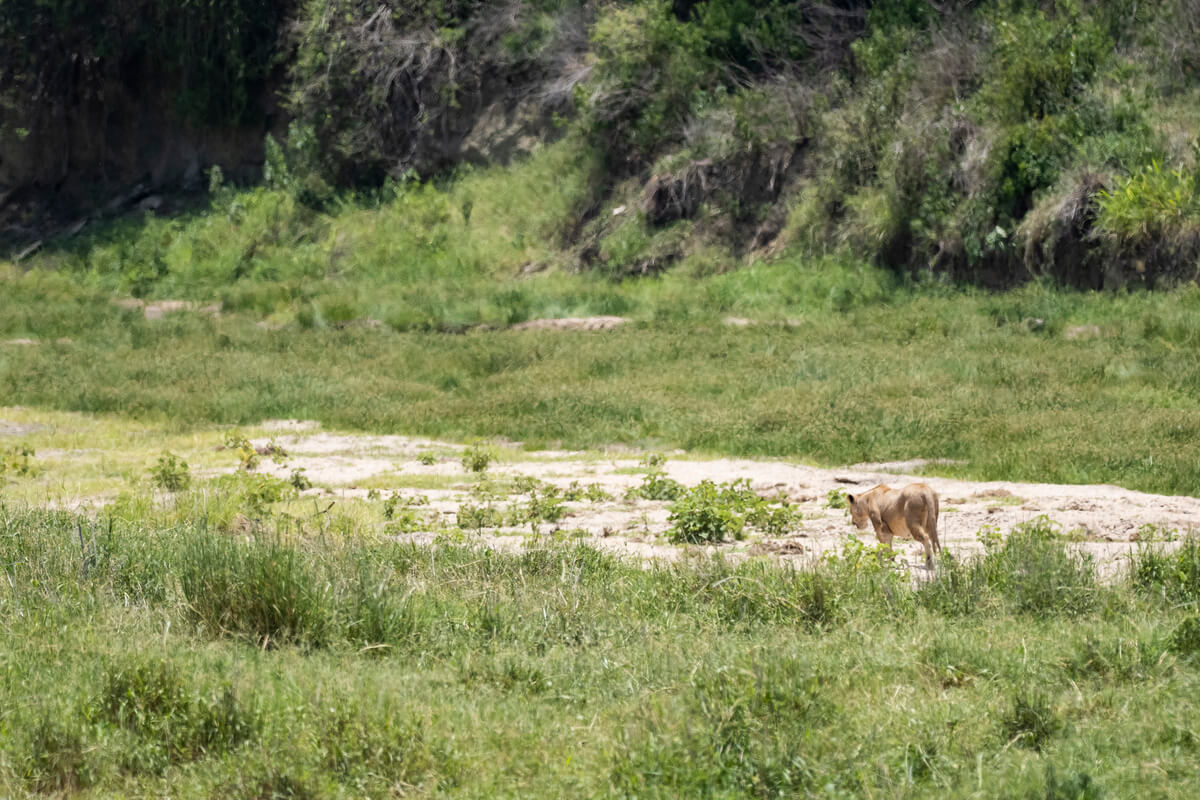

How Much Does a Safari in Tarangire National Park Cost?
The entrance fee for Tarangire National Park is $59 USD for foreigners. This fee grants access to the park for 24 hours.
If you book a safari through a local operators, the entrance fee is often included. In Tanzania, safaris typically cost around $200 USD per day if traveling in a group and camping. If you prefer a private vehicle and better accommodations, the price increases accordingly.
When is the Best Time to Visit Tarangire National Park?
Although Tarangire National Park can be visited year-round, some months are more favorable for a better experience.
The best months to visit are from July to October. These months coincide with the dry season, and since it hardly rains, the Tarangire River becomes the only water source in the area. This causes a migration of herbivores to the park (around 250,000 individuals), which in turn attracts predators.
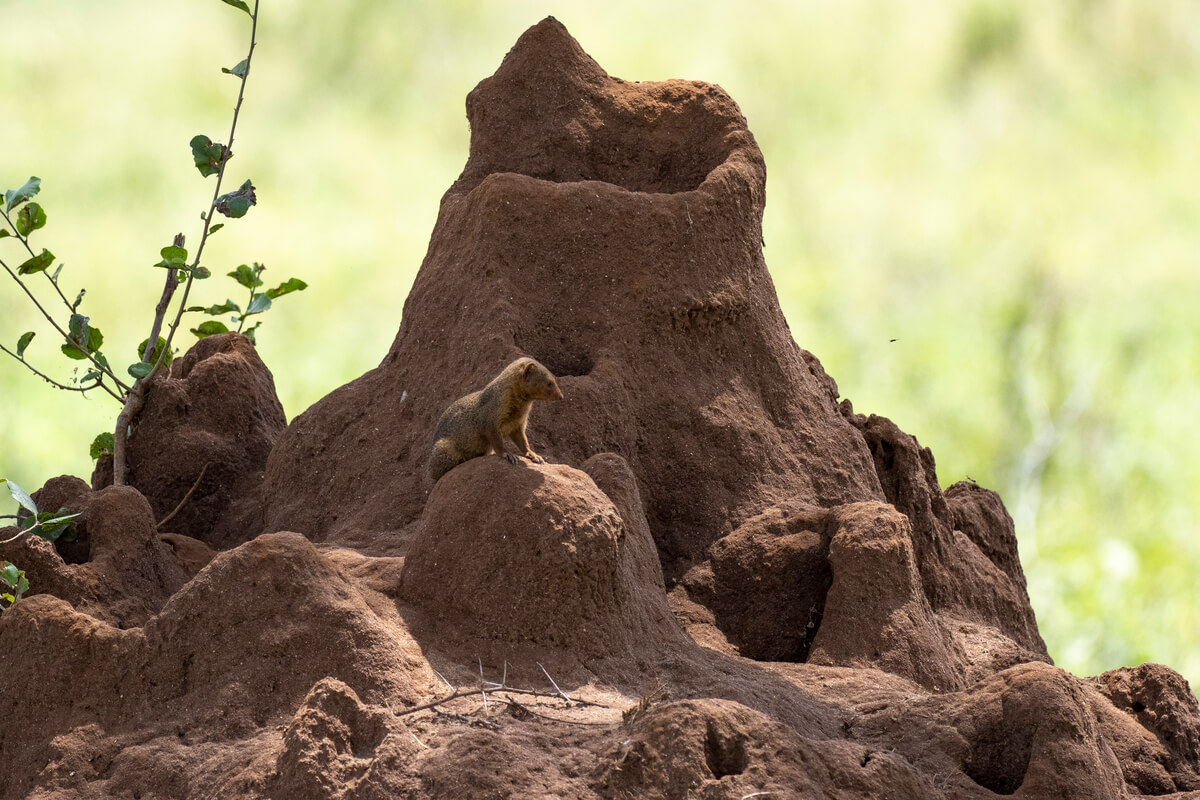
In November, when the rains begin, many herbivores leave the park in search of areas with more food. As a result, wildlife numbers in the park are at their lowest in November and December, although animals are still present.
From January to March, the main rainy season begins. The landscape becomes much greener and more lush, and herbivores start returning to the park. During these months, wildlife numbers are not at their highest, but safaris are still productive.
During April and May, when the rains have ended, the weather is pleasant, and the landscape remains green and lush. However, wildlife is still very dispersed during this time.
As always, the advantage of visiting the park outside of peak season is that prices are lower, and there are fewer vehicles. Additionally, there are still opportunities to see the famous felines of the park (lions, cheetahs, and leopards), as they are territorial animals.

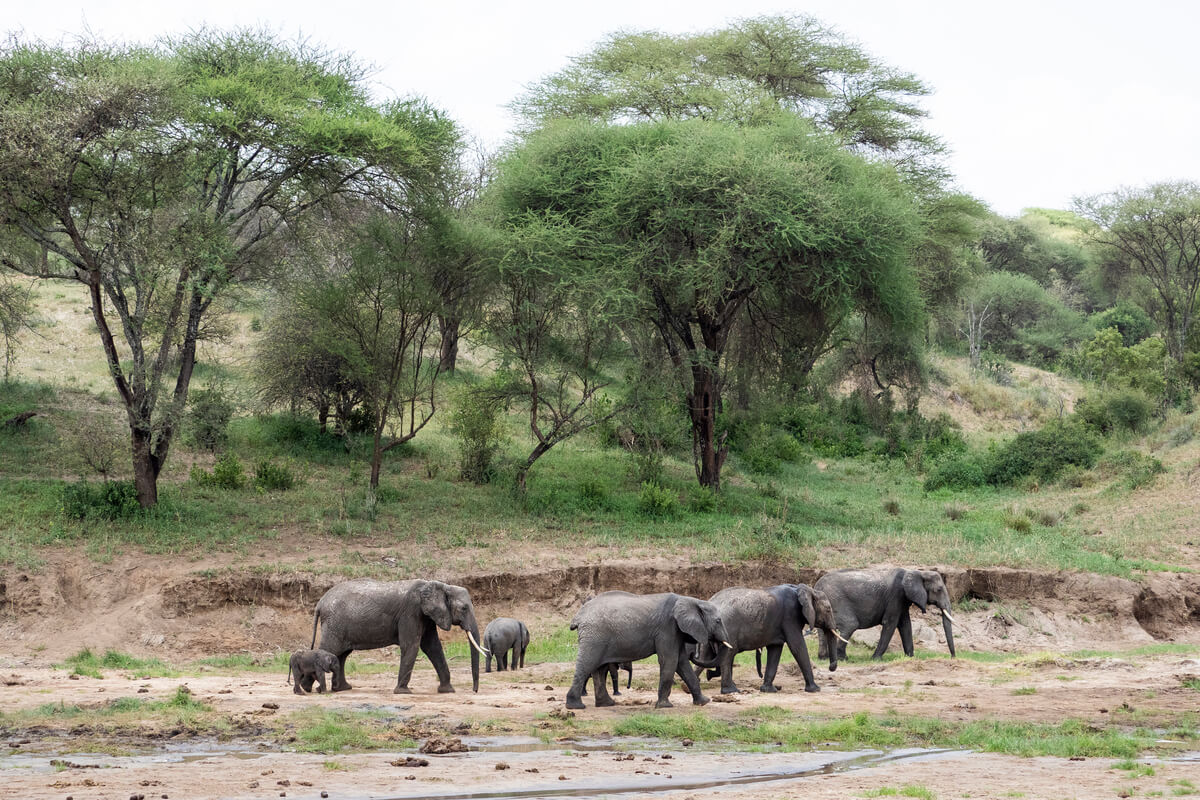
What Animals Can Be Seen in Tarangire?
Tarangire National Park is home to most of Africa’s iconic wildlife. The only species not found in the park is the rhinoceros.
Some of the most common species include:
Elephants (there are many!)
Giraffes
Zebras
Impalas
Mongooses (particularly the dwarf and banded mongoose)
Waterbucks
Wildebeests
Buffaloes
Green monkeys
In terms of predators, lions are the most common. While lion sightings are frequent, they don’t always appear. Leopards and cheetahs are also present, but sightings are rare.
Additionally, there is a wide variety of birds (over 500 species). Wetland areas are particularly good for birdwatching.

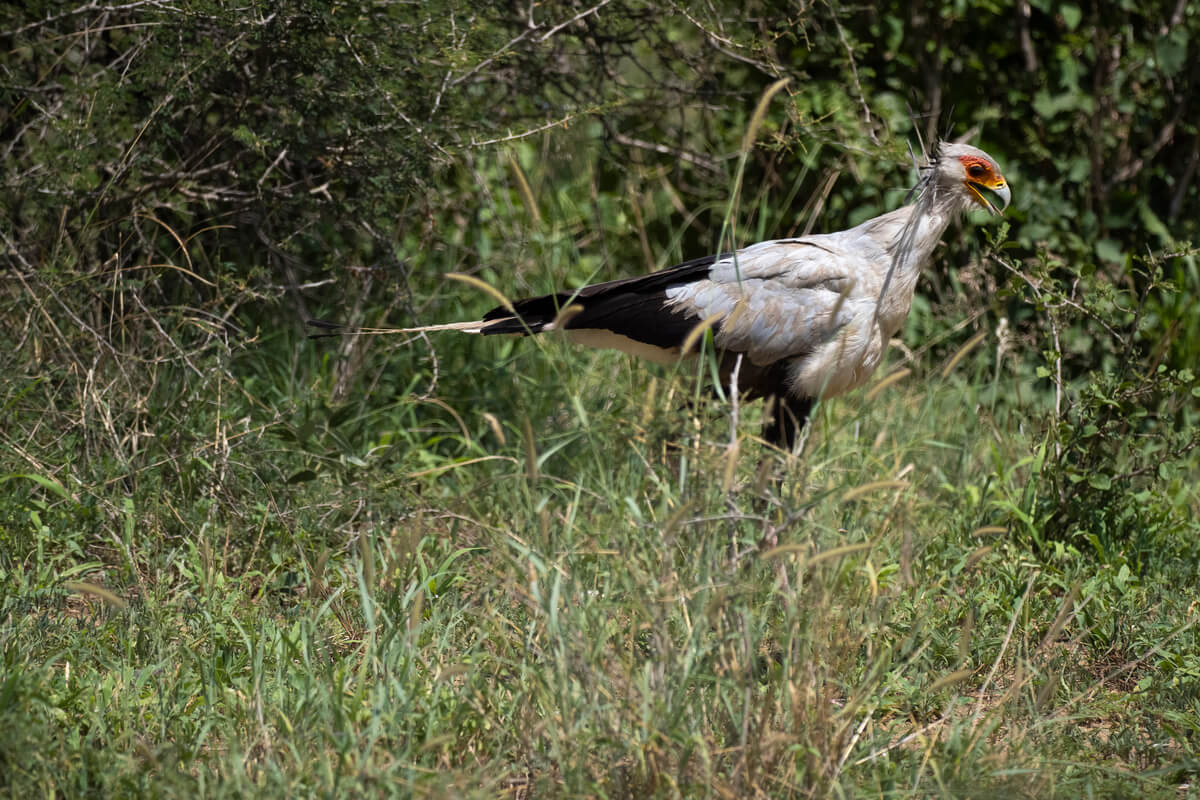

Where to Stay in Tarangire National Park?
Like most Tanzanian reserves, Tarangire National Park offers the option of staying inside the park or in a nearby village.
Staying inside the park has the advantage of saving time on transfers, allowing you to make the most of the best times for animal sightings (early morning and late afternoon). Moreover, from many accommodations, you can continue to observe wildlife. The downside is that these accommodations are often more expensive, and there are no budget options inside the park.
Some of the most notable accommodations inside the park include:
For a more economical option inside the park, you can camp at one of the public campsites. You’ll need to bring all your gear, and it costs about $35,40 USD.
If you’re looking for a more affordable stay, the best option is to stay in Mto wa Mbu, about an hour’s drive from the park. Most safari routes pass through this village, as it is just over thirty minutes from the Ngorongoro Conservation Area. In Mto wa Mbu, there is a wide range of accommodations, from private campsites to more comfortable options. I stayed two nights at Jambo Lodge and one night at Fig Tree Lodge Camp. Both had simple but acceptable rooms. You can view all accommodation options here.
💡 Get a Free Quote for Your Trip to Tanzania with Trusted Local Operators
If you’d like to plan your trip to Tanzania with reliable local tour operators, I can help you connect with the best ones. Just fill out this quick form, and based on the type of safari you’re looking for, I’ll match you with the most suitable local agencies. I’ll also be available to answer any questions throughout the planning process — so your safari will be stress-free, authentic, and truly unforgettable!
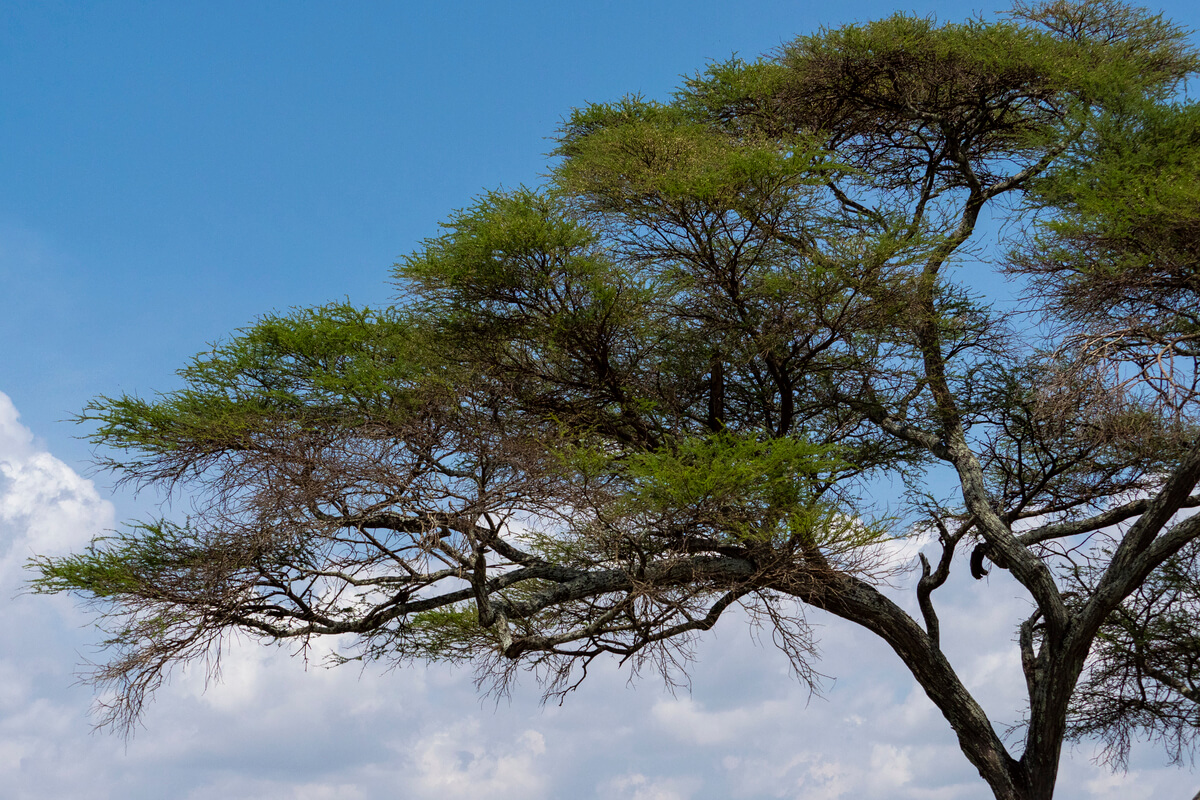
My Experience: Two Days in Tarangire National Park
During my trip to Tanzania, I did a six-day safari and another four-day safari, both in the northern part of the country. On both trips, I visited Tarangire National Park. It was February, which is not considered the best time to visit, but my experience was very positive.
My First Safari
Tarangire National Park was the first stop on my group safari in Tanzania, organized by a local operators. We left Arusha at 8 AM and arrived at the park around 11 AM. It wasn’t the best time, as it was quite hot and sunny. But when you travel in a group with an agency, it’s essential to adapt.
Shortly after entering the park, I was captivated by the baobabs and the lush green landscape. It was one of the most beautiful settings I would see in the northern part of the country.


After seeing the first groups of zebras and impalas, we encountered a solitary wildebeest and a couple of giraffes. Soon after, we received a radio call from our guide informing us that a cheetah had been spotted. Cheetah sightings are not common in Tarangire, so we headed straight there. When we arrived, the cheetah was lying in the shade of an acacia. It was a bit far, but it was still thrilling to see the fastest animal on the savannah.
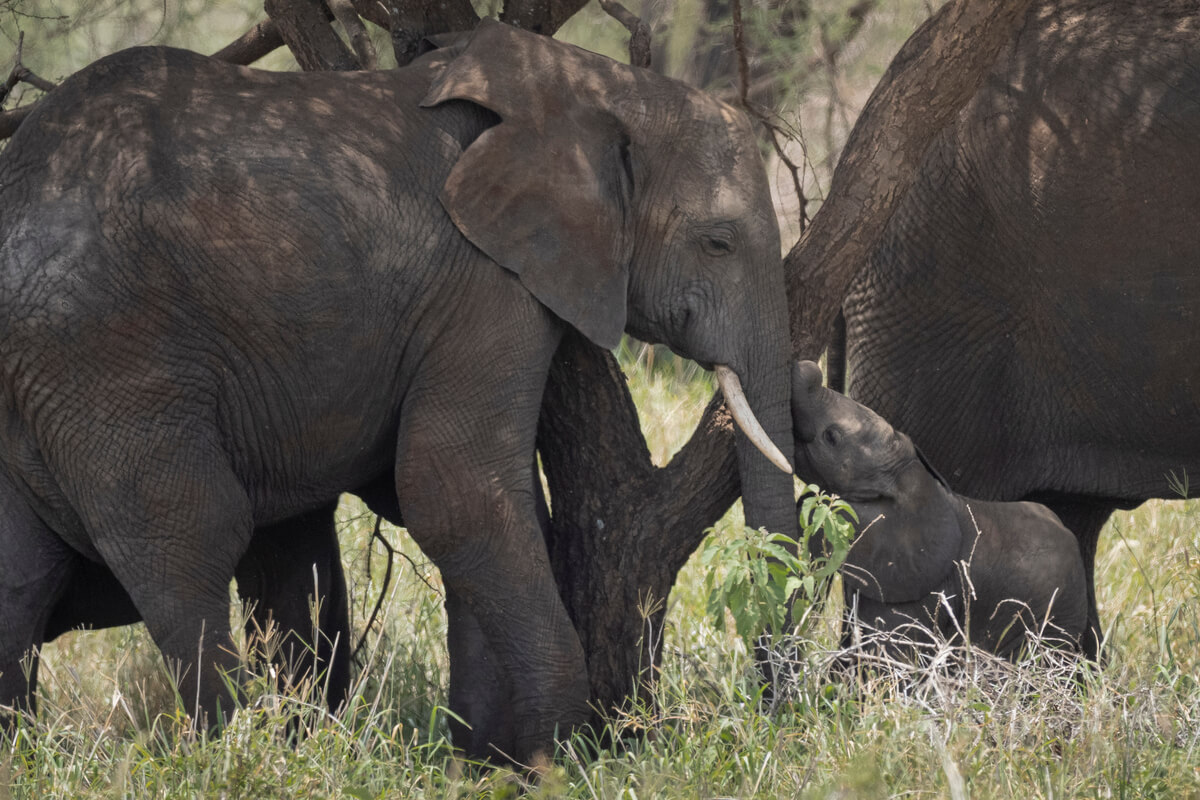
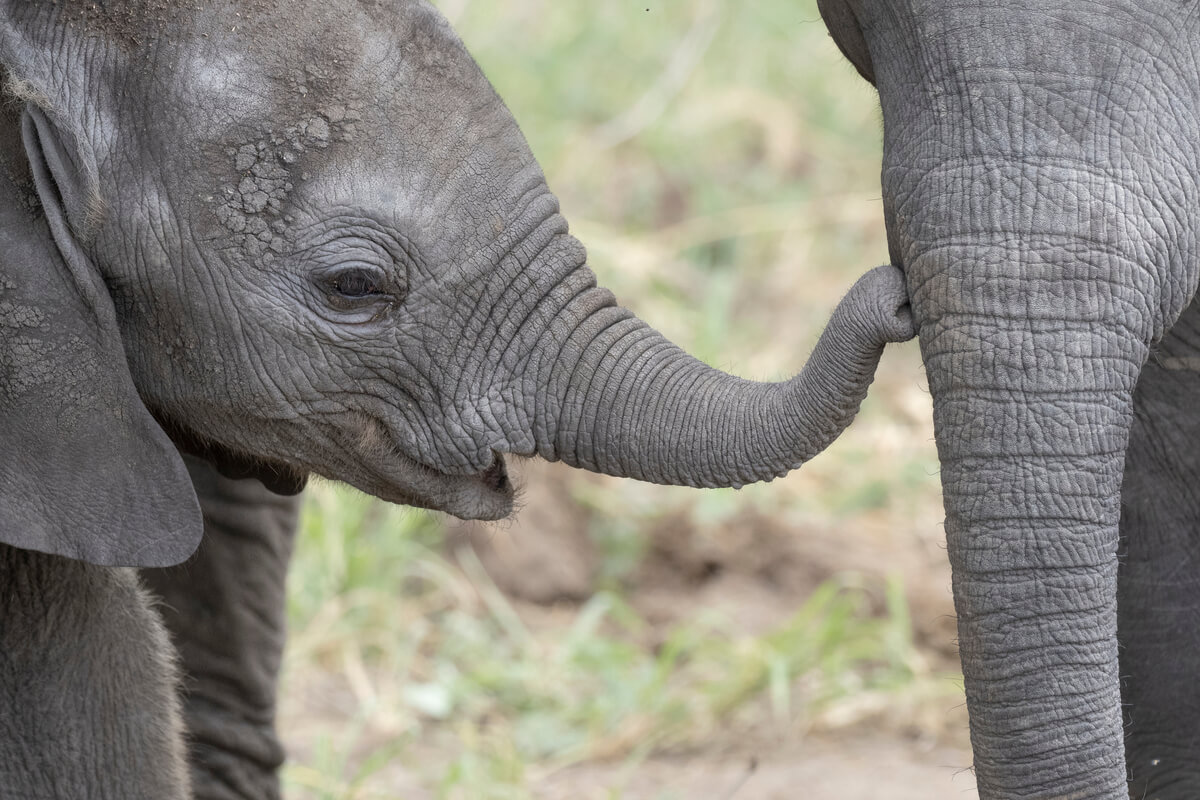
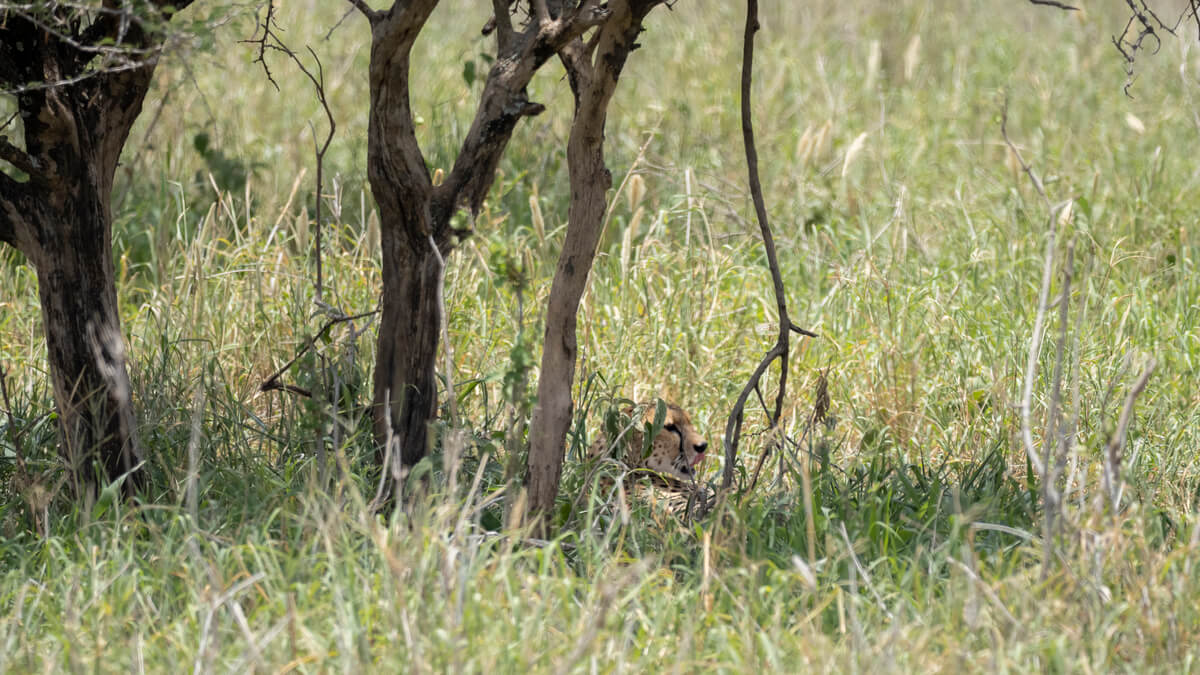
As we continued deeper into the park, we had another surprise: two lions! It was hot, so they were both lying down and resting. Only one of them got up briefly, moved a few meters, and lay down again.

After stopping for lunch at a picnic area inside the reserve, we continued with the safari. We photographed a secretary bird and also spotted a group of mongooses quickly moving around a termite mound. Near the end of the safari, we encountered a large group of elephants very close to the road. In these situations, if the elephants are calm, it’s best to stop the car and remain silent. Gradually, they approached and passed right next to the vehicle.
We ended the day by heading to Mto wa Mbu, where we stayed at Jambo Lodge. The next day, we would continue our journey to Serengeti with all our camping gear and supplies.
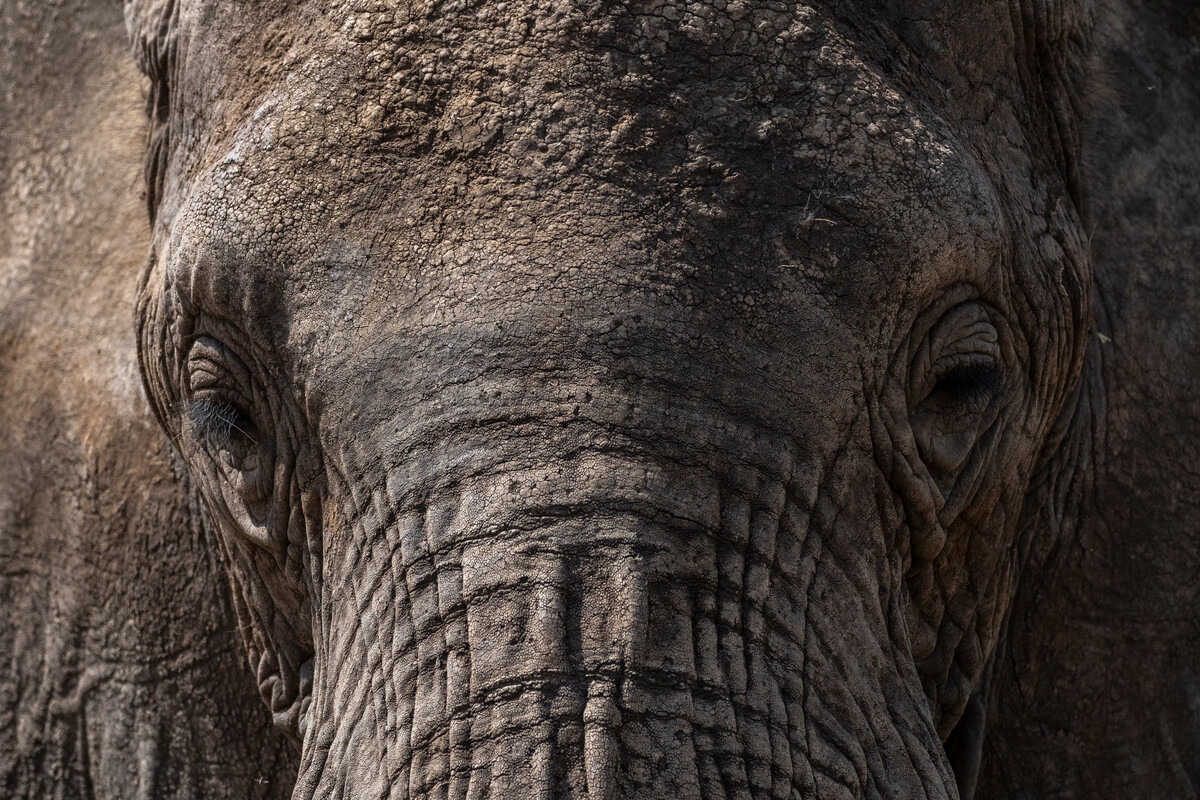

Second Safari in Tarangire
During my second safari in Tanzania, a four-day trip, I visited Tarangire on the last day of the route. After staying at Fig Tree Lodge Camp in Mto wa Mbu, we left for the park at 8 AM. By 9 AM, we were starting the safari.
Again, the baobabs and zebras welcomed us. We found a baobab with a damaged trunk, and shortly after, we saw the culprit: an elephant. Elephants sharpen their tusks on baobab trunks, scratch themselves, and break them to access water.



A few meters ahead, we encountered a new group of elephants. There was a young calf, about three or four months old, hiding shyly between its mother’s legs.
After this, we had one of the highlights of my trip to Tanzania. We were informed that a group of lions was resting on the branches of a tree. It was one of the scenes I had been most eager to see: the famous tree-climbing lions. When we arrived, it was even better than I imagined. There were two huge adult lions, but also three cubs about four months old. They started to move around, and I watched them play, meow, and awkwardly climb down from the tree.
Thanks to this scene, Tarangire National Park became one of my favorite parks.
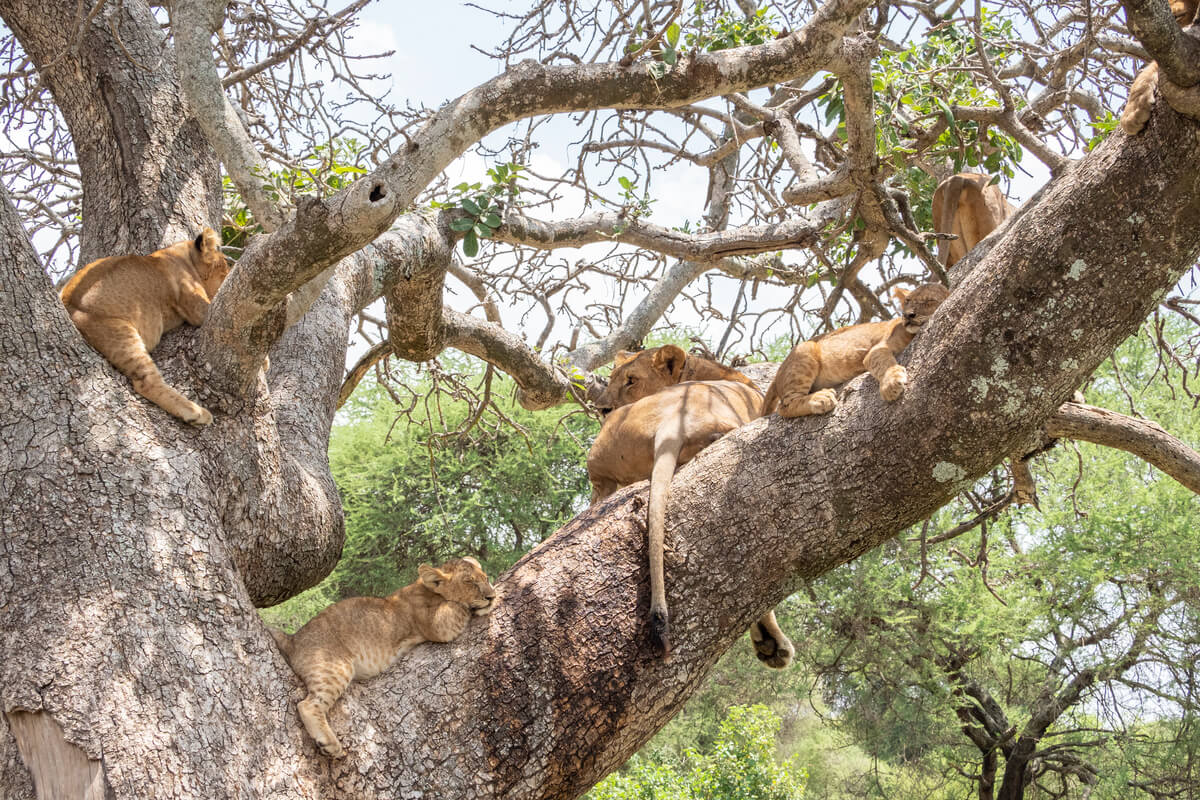

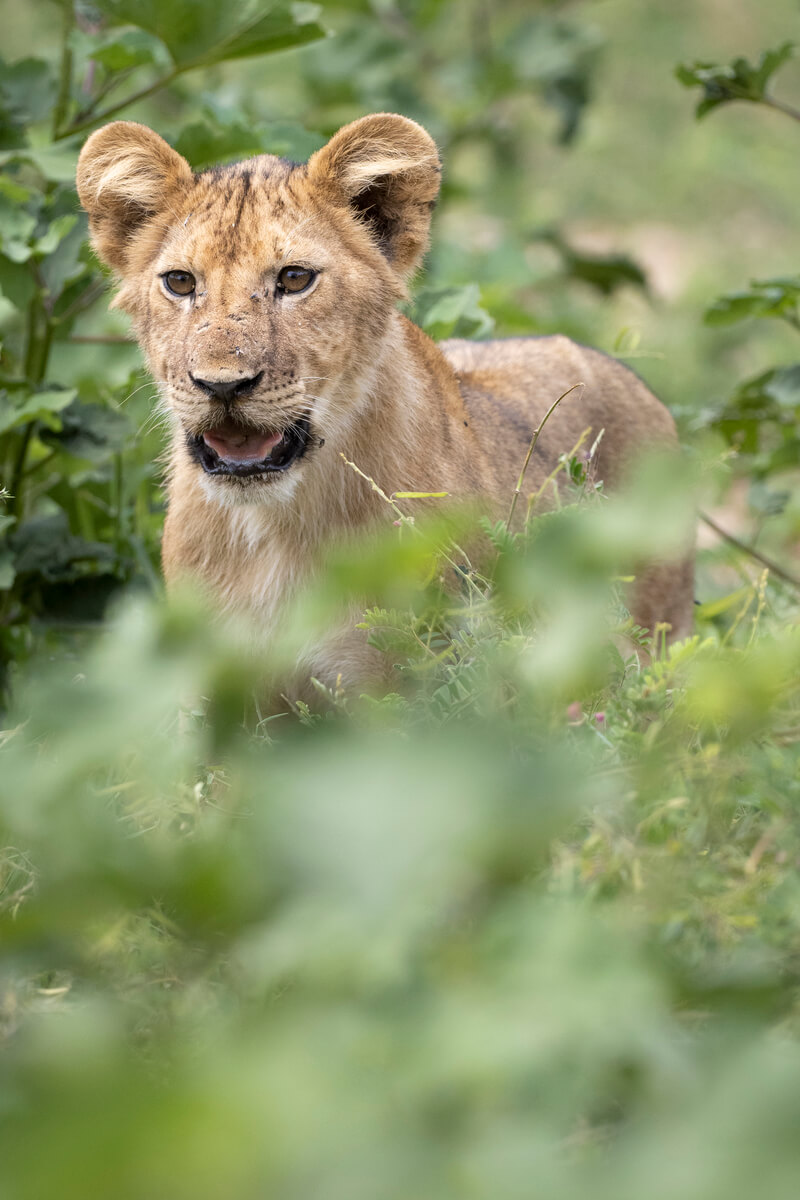
Plan Your Trip to Tanzania
🦍 Find the best trips and safaris to Tanzania with a local operator here.
✈️ The best flight deals to Tanzania here.
🏨 The best prices for accommodations in Tanzania here.
🚑 Get your travel insurance with a 7% discount here.
💳 The best card for paying (without fees) and withdrawing money abroad here.

